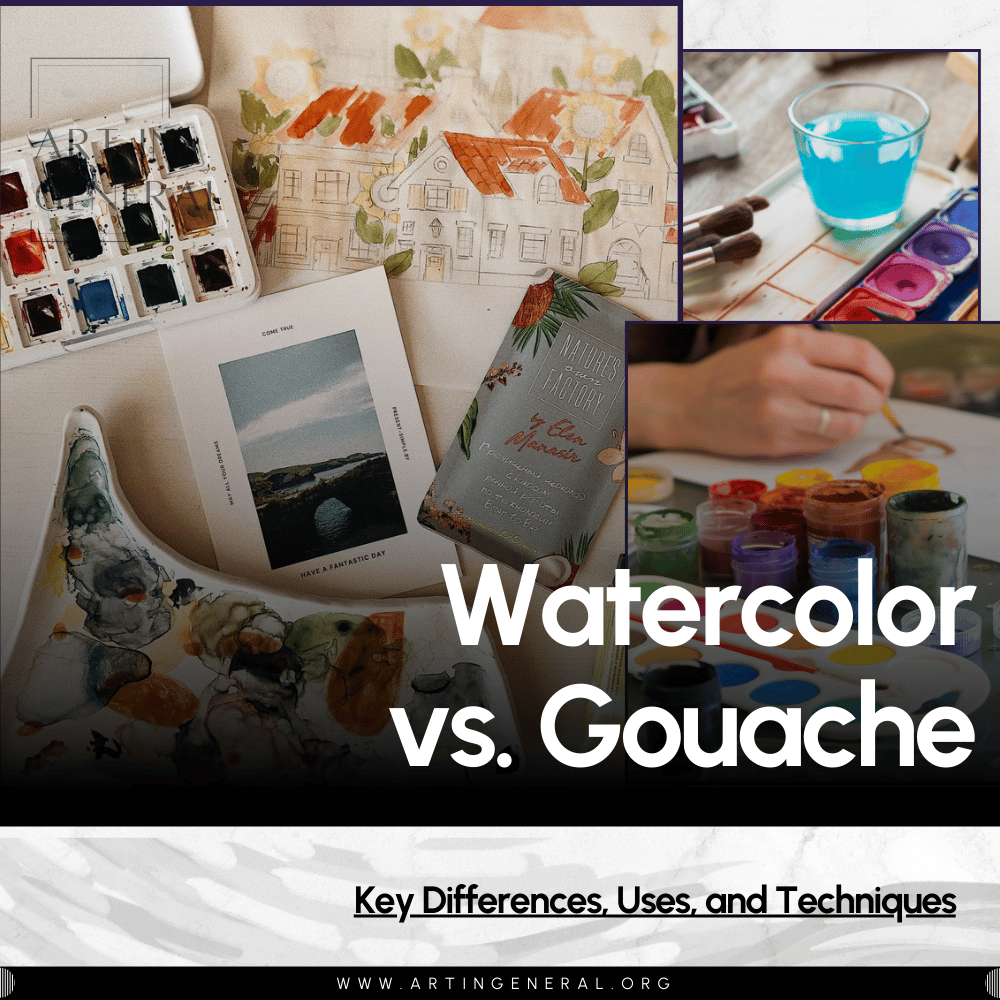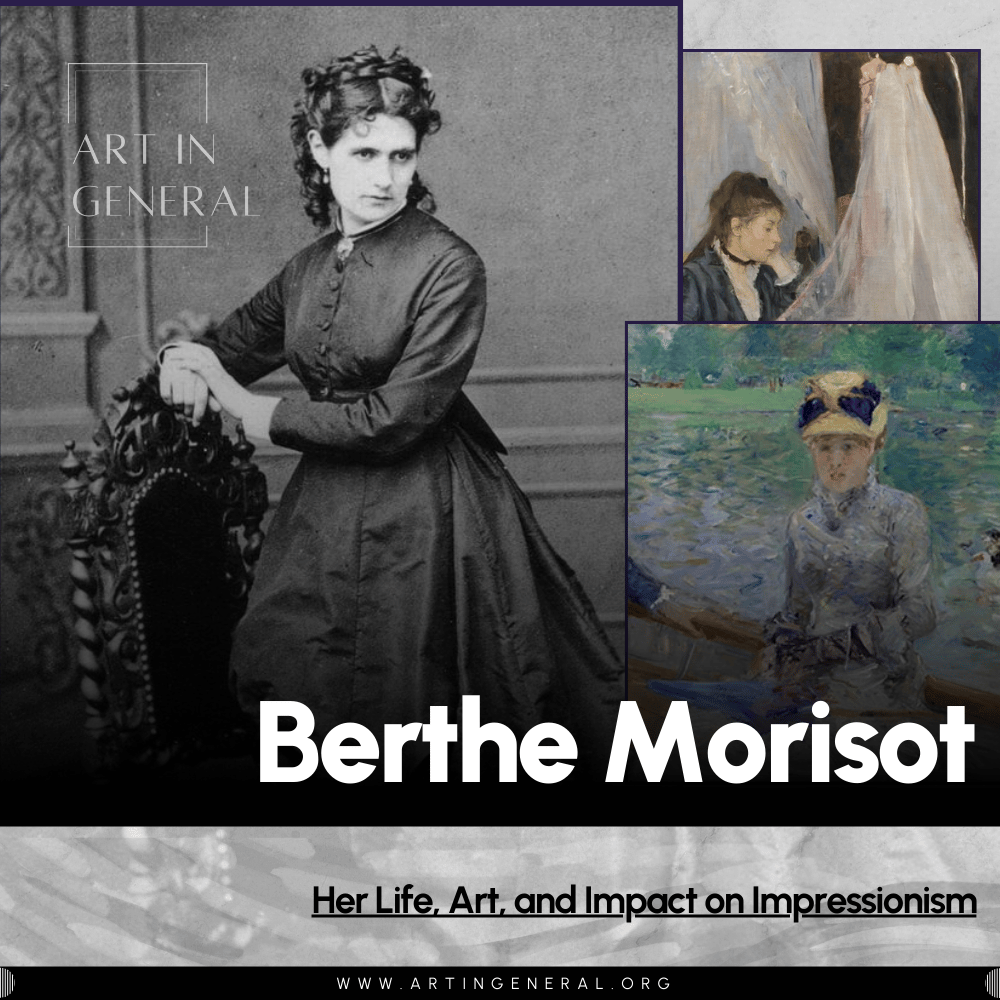
Impressionism is the term used to characterize an art movement that emerged in France in the middle to the late 1800s. The use of vivid color, small, loose brushstrokes that provide just the most basic impression of form, and a focus on accurately capturing natural light distinguishes the impressionist art movement.
Claude Monet, Camille Pissarro, Pierre-Auguste Renoir, Alfred Sisley, Edgar Degas, and other early Impressionist painters were all driven by the same ambition to reject the rigid conventions of academic painting. The artists specifically wanted to be free of the Académie des Beaux-Arts and its yearly Salon.
The Birth of Impressionism: Historical Context
Beginning of the Impressionist art movement
The 1860s saw the emergence of impressionism because of the plein-air painting initiatives of Claude Monet, Alfred Sisley, and Pierre-Auguste Renoir. In their free time, the soon-to-be impressionist artists would first board trains that would take them to the city’s outskirts. There, they would set up easels amid fields or riverbanks and attempt to capture fleeting moments of sunlight reflected by the water, laborers bent over their work, or members of Parisian society enjoying a leisurely Sunday at the seaside. Impressionist paintings were often seen as incomplete when compared to the refined neoclassical artist’s works.
Development of the Impressionist art movement
The impressionists’ main problem was that the traditional arts elite despised the new painting style they were creating, which painted modern situations with strong, loose brushstrokes. Impressionist paintings were regularly rejected by the Academy des Beaux-Arts. Critics also denounced them after they were accepted to exhibit as Manet’s Olympia did in 1865.
The harsh treatment they received from the art establishment led the impressionists to first propose setting up their own show in the 1860s. It wasn’t until 1874 that the first exhibition happened. Thirty artists’ works totaling 165 were on display. Many impressionist paintings went unsold, the critics criticized most of the artwork, and the audience primarily came to laugh. Between 1874 and 1886, they staged eight impressionist exhibitions.
End of the Impressionist art movement
Divergent political and philosophical viewpoints among the artists caused acrimonious arguments and rifts that changed who contributed to what. A new phase of avant-garde painting likewise began with the last of the independent exhibits in 1886.
Impressionists felt free from rigid guidelines regarding subject matter, composition, and technique. They were no longer reliant on the Salon’s opinion. They were allowed to paint anything they pleased, play around with new technologies, and develop their creative talents and ideas.
Influence of the socio-political climate of 19th-century France to the rise Impressionism
The emergence and growth of Impressionism came at a time of great political, social, and industrial upheavals in France. Following the French Revolution period that saw the emergence of a middle class called the ‘bourgeoisie’, people became more interested in painting contemporary scenes.
Paris was also transformed into a modern city due to urbanization thus creating new art subjects. Artists like who sought to depict transient motions, light, and atmospheric conditions, could not conform to the harsh regulations of academic painting.
Technological advancements that influenced Impressionist techniques
Impressionism developed in large part because of the newly developed field of color theory. The advent of premixed paints in tin tubes, in the middle of the 20th century provided Impressionists with an opportunity to work more freely, both indoors and outdoors.
Characteristics of Impressionism
The characteristics of impressionism include rapid, sloppy brushstrokes, bright paintings, “En plein air”, and relative color.
Rapid, sloppy brushstrokes
By scrutinizing an Impressionist painting, you can identify its unique, loose, and small brushstrokes. Impressionist paintings are not just about the fine details. Rather, impressionists strive to “capture” the essence of a moment. The artist’s hand moves rapidly and sparingly as it makes short brushstrokes across the surface.
Close-up of Woman with a Parasol – Madame Monet and Her Son by Claude Monet

Bright paintings
Impressionists aimed to use light “background” colors or unprimed canvases. Their artwork included colors from the light spectrum: red, yellow, green, orange, indigo, blue, and violet. They did not blend colors on the canvas, but would often place complementary colors next to each other to give the artwork a vibrant and living appearance.
“En plein air” (outdoors painting)
Paintings before the Impressionist movement were produced in studios. Paintings by Impressionists were moved outside. Their goal was to capture the atmosphere or “impression” of a certain point in time. To do that, they must be present at the site. They therefore painted “en plein air,” or in outdoor scenes.
The completed painting below demonstrates how Impressionism included outdoor and landscape themes.
Claude Monet Painting by the Edge of a Wood by John Singer Sargent (1885)

Relative Color
The opposite of “local color” is relative color. Local colors that are typically associated with specific items include white for snow, blue for the sky, and green for grass. Since Impressionist painters aimed to depict objects in the illumination, they saw at specific times of the day or in specific environments, they disliked employing local colors.
How Did Impressionist Artists Revolutionize The Use Of Light And Color?
Impressionist paintings transformed art by eschewing realistic portrayal in favor of light and color, capturing the always-changing landscapes, and influencing Western art culture. They achieved this by embracing the fleeting nature of life and employing inventive techniques.
Which Painting Techniques Were Pioneered By Impressionist Artists?
Techniques pioneered by Impressionist artists include:
Short, broad paintbrush strokes swiftly convey the general idea of the subject rather than its finer details.
The colors are mixed as little as possible and applied side by side. Complementary colors can be combined to create greys and gloomy tones. All-out impressionism avoids using black paint.
Wet paint is mixed with other wet paint without waiting for the previous coats to dry, resulting in smoother edges and color blending.
What Subjects Did Impressionists Depict, And Why Were They Revolutionary?
Impressionists painted realistic scenes of modern life. They found that they could capture the momentary and transient light effects by painting outdoors.
Pioneers and Icons of Impressionism
The most important impressionist artists are Claude Monet, Camille Pissarro, Pierre-Auguste Renoir, and Beth Morisot.
Claude Monet (1840-1926)

It was Claude Monet who gave the French Impressionist movement its name. Known for his fascination with natural light and painting in the open air, Monet later developed the technique to its highest point with his series of paintings, which featured a series of observational sequences of the same subject, at various times of the day, viewed from a variety of angles. As shown in Monet’s series of paintings depicting Rouen Cathedral in different seasons and times of day, he wanted to illustrate how properties around a subject could alter its appearance. His most famous of this series is 1894’s Rouen Cathedral: The Facade at Sunset.
Camille Pissarro (1830-1903)

The only artist to participate in each of the eight Impressionist exhibits was Camille Pissarro. He painted depictions of French peasants’ daily lives all over his canvases. In Camille’s paintings, light plays a delicate role in enhancing colors. His most influential paintings include the Boulevard Montmartre series, Two Women Chatting by the Sea, St. Thomas (1856), Road to Versailles at Louveciennes (1869), and Self-Portrait (1873).
Pierre-Auguste Renoir (1841-1919)

Pierre-Auguste Renoir is renowned for his sensitive depictions of friends, family, and fellow artists. Many of his paintings, including The Luncheon of the Boating Party, feature vivid colors and are bathed in sunlight. He is renowned for his skill as a colorist who can capture the subtle changes in light and shadow.
Berthe Morisot (1841-1895)

As a female painter, Morisot made a name for herself in the largely male-dominated impressionist art community. Her art has an odd, almost unfinished quality since she produced little oil and pastel paintings on unprimed canvas. She also liked using white pigment planes because they created a striking contrast with her bold black accents. Her most influential paintings were View of Paris from the Trocadero (1871-72), The Cradle (1872) and In the Wheatfield (1875).
Masterpieces of Impressionism
Some of the major impressionism artworks are Dejeuner sur l’Herbe, Impression Sunrise, Luncheon of the Boating Party, The Boulevard Montmartre on a Winter Morning, and Nocturne: Blue and Gold – Old Battersea Bridge.
Dejeuner sur l’Herbe (Lunch on the Grass)

Artist: Édouard Manet
Created: 1862–1863
Medium: Oil Paint
Location: Musée d’Orsay
The most remarkable aspect of Manet’s painting is the naked lady in the foreground. She is shown looking boldly at the viewer while completely at ease. The two young men sitting close to her catch our attention because they are not from the classical era but rather dressed in modern Parisian attire. In the lower-left corner of the image is a toppled picnic basket containing bread, cherries, peaches, and an oyster on the woodland floor. A closer look reveals that the woman’s clothes and hat are scattered all over the floor.
The woman in the middle of the painting appears to be bathing in what seems to be a nightgown. The artist used broad brushstrokes and a quick painting method to represent the forest canopy. The uncovered body of the main character is painted in a vivid, constant tone with little to no shading, giving the painting a “flat” appearance.
Luncheon of the Boating Party

Artist: Pierre-Auguste Renoir
Year: 1881
Medium: Oil on canvas
Location: The Phillips Collection, Washington DC.
The Luncheon of the Boating Party’s arrangement symbolizes both the relatively recent Impressionism and how the industrial revolution has changed French society. Renoir uses color, texture, shape, and space to create the scenario he had in mind.
The clothing of the figures and Renoir’s applied brushstrokes both convey texture. Numerous golden tones can also be seen in Renoir’s palette. The sun has darkened the women’s fair complexion, and their bare arms and hats serve as further evidence that it was a warm day.
The open composition of the painting makes extensive use of light. The cloth on the table and the vests of the two men reflect the bright sunlight from the balcony’s opening. Renoir captured the transient effects of shifting light and color on this canvas.
The Boulevard Montmartre on a Winter Morning.

Artist: Camille Pissaro
Year: 1897
Medium: Oil on canvas
Location: Metropolitan Museum of Art, New York.
Camille Pissarro painted several series depicting the grands boulevards while looking at the scenery from his hotel room at the Grand Hôtel de Russie. At this point, Pissarro’s subjects are no longer the serene countryside but rather urban areas, whose populations are growing quickly as a result of the Industrial Revolution.
Pissarro used color theory instead of clear lines to show distance. He painted with quick, short brushstrokes that perfectly capture the dawn light in Paris and create the illusion of a world in constant motion. He also employs clear contours to soften and provide the impression of different buildings in the background that are difficult for the human eye to perceive.
Nocturne: Blue and Gold – Old Battersea Bridge

Artist: James McNeill Whistler
Year: c. 1872–1875
Medium: Oil on canvas
Location: Tate Britain, London
Nocturne: Blue and Gold, was created during a period of urban reconstruction in London. The artwork shows the historic Battersea Bridge, located south of the city, from a riverbank viewpoint. Rockets shoot out of the sky, and the lights of the more recent Albert Bridge twinkle in the distance.
James Whistler invented a formula and a technique that he could subtly alter in the early 1870s. He would use an abundance of medium to combine his colors in advance until he produced a “sauce.” Then, using long strokes of the brush pulled from one side to the other, he would create buildings, the sky, and the river, deftly adjusting the tones with the utmost skill.
Impressionism vs. Fauvism
Impressionism arose in opposition to the strict restrictions of academic art during the late nineteenth century. Early Impressionist painters focused on the influences of color and light in their attempts to represent the transitory moments of daily life. Their paintings have a strong emphasis on atmosphere and visible brushstrokes, and they have an amazing sense of spontaneity and immediacy.
Impressionism gave way to Fauvism at the beginning of the 20th century. Fauvism, which was pioneered by artists such as Henri Matisse and André Derain, stands out by its use of vivid, non-representational color.
Fauvist paintings were recognized for their vivid, exaggerated color choices, which frequently deviated from naturalistic images. Even at the expense of realism, the movement aimed to use color and form to express emotion and the painter’s inner world.
Impressionism focused more on accurate portrayals of light and atmosphere since it was primarily concerned with capturing a fleeting moment in time. Contrarily, Fauvism prioritized the emotional effect of color over realistic portrayal, frequently abandoning realism in favor of expressive intensity.
Impressionism vs. Realism
Realism was the first of the two art movements to develop, appearing in Paris in the early to mid-19th century. The idealizing tendencies of previous Romanticism were rejected by realist painters like Jean-Francois Millet, Gustave Courbet, and Edouard Manet, who instead chose to concentrate on the grim realities of everyday life.
Impressionism derived most of its inspiration from Realism. Similar to the Realists, the Impressionists depicted scenes from actual life rather than imaginary or mythical realms.
Realists typically used intricate detail in their paintings to highlight the stark reality of the subjects they captured. Impressionists, on the other hand, developed a highly stylized method of painting that uses delicate, feathery brushstrokes that resemble light passages.
Impressionism vs. Expressionism
Impressionism emerged in France in the late nineteenth century, whereas expressionism first appeared in Germany and Austria in the beginning of the 20th century.
Expressionist artists focused more on capturing the artist’s emotional response to the subject matter, whereas impressionists focused more on capturing the impression of light and it’s shifting influence.
Impressionism vs. Surrealism
Surrealism first appeared in the early 1900s. It’s weird and dreamlike images distinguish it. Salvador Dali is well-known for his melting clocks and other bizarre and surreal visuals.
Impressionism emerged in the late 19th century. It is distinguished by its emphasis on using light and color to capture the ephemeral moments of life. Art scholars frequently link the art of Claude Monet, renowned for his exquisite paintings of gardens and water lilies, to impressionism.
How Did Impressionism Pave The Way For Post-Impressionism?
Impressionism laid the groundwork for Post-Impressionism by challenging artistic conventions and emphasizing individual perception and interpretation. A group of young painters led by Georges Seurat, Paul Gauguin, Vincent van Gogh, and Paul Cézanne, searched for independent artistic approaches in the late 1880s to portray feelings instead of merely optical impressions, concentrating on subjects of deep symbolism. Because of the use of subdued hues and definitive forms, their art was characterized by a revived sense of aesthetics and abstract tendencies.
What Other Art Movements Were Inspired By Or Related To Impressionism?
Impressionism predates several painting genres, such as Neo-Impressionism, Post-Impressionism, Fauvism, and Cubism, by emulating the sensation in the eye that observes the subject rather than defining its specifics and by generating a welter of forms and techniques.
How Does Impressionism Continue To Influence Modern Art And Culture?
Impressionism’s groundbreaking method of capturing light, color, and atmosphere has had a lasting influence on modern art and culture. The emphasis on personal expression, the use of vibrant colors, and the portrayal of commonplace settings are still prevalent in contemporary art, influencing creators in a variety of media, including painting, architecture, photography, and even film.
Impressionism’s appreciation of nature, spontaneity, and light play has left an enduring legacy that still affects artistic expression today, influencing fashion, design, and other facets of popular culture.





Leave a Reply